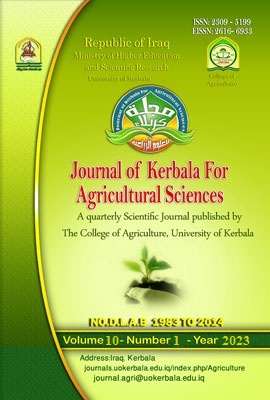Abstract
This study aimed to determine the prevalence of Campylobacter species in milk and its product samples in Karbala province and detect the antibiotic sensitivity of these isolates. One hundred samples were aseptically collected as follows: 50 samples of bovine raw milk and 50 samples of bovine milk products from different local shops and farms distributed in Karbala province, in addition to, 100 samples from children suffering diarrhea, fever, and abdominal pain from Kerbala (Iraq) General Children's Hospital. The pathogen was found using biochemical testing after samples were immediately inoculated into enriched and sub-cultured on selected media. Campylobacter spp. At 24 to 48 hours, colonies on the plate are small, often grayish in appearance, although some have to be creamy grey, slightly raised and moist, and often generated separate colonies of bacteria, flat with irregular borders, and non-hemolytic. This was confirmed by using the polymerase chain reaction method, 11 isolates (5.5%) of 200 samples were determined to be Campylobacter species. The 11 iso-lates were subjected to sequencing to detect the species of Campyl-obacter which found two species (C. jejuni and C. upsaliensis). Re-sults showed that Campylobacter spp. 11 positive isolates, C. jejuni recorded 9 (81,8%) positive results while C. upsaliensis recorded 2 (18.18%) positive results. Antibiotic_ susceptibility_ test was cultured by using disk diffusion assay, campylobacter spp. showed complete sensitive to ciprofloxaci , gentamycin, and Imipenem.
Keywords
Antimicrobial susceptibility
Campylobacter jejuni and C. upsaliensis
Infection rate
Karbala retail points
